Banana peels, black tea, molasses and eggshell make up a super easy organic garden fertilizer. Just add to an empty jug, mix with rainwater and go!
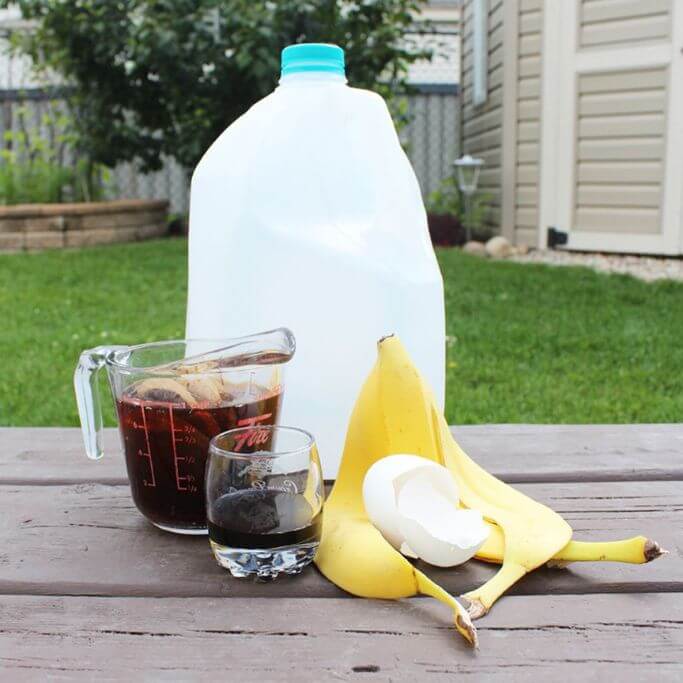
I’ve been trying to learn the ropes of vegetable gardening for about three years now. Before that I was more of a “plant a perennial that my mom gave me and then forget about it” kind of gal. Back then I used Miracle Grow, but when I decided to start growing my own food I got all crunchy and stopped using any commercially made fertilizers or pesticides.
I’ve dabbled in the realm of homemade bug deterrents. (I’m all for letting bugs be bugs, but when they start decimating my runner beans, well – they gotsta go.) However, I’ve yet to attempt making my own fertilizer.
I know some people just say “dig a hole and throw some vegetable scraps in it,” but that just seems… too easy? For some reason, I’ve always been that person who likes doing things the hard way. Then I see homemade garden fertilizer recipes that call for fish heads and I’m like yeah… no…
Want to learn how to make your very own DIY garden fertilizer at home? Read on!
What Does NPK Stand For?
This homemade garden fertilizer is somewhere between “throw a banana peel next to your rosebush” and “decapitate a fish.” But first, let us review the components of a good fertilizer by way of a fun little mnemonic phrase courtesy of Natural Living Ideas: “up, down and all around.”
What this translates to in the world of fertilizer is your NPK balance. N (nitrogen) helps plants grow tall, P (phosphorus) develops a plant’s roots and K (potassium) contributes to a plant’s overall health. Aside from these three big ones, plants also need many other nutrients such as calcium, magnesium and sulfur.
The variety of nutrients plants require mean that homemade fertilizers often have a laundry list of ingredients. Yes, I like doing things the hard way. But some of these recipes call for things I don’t have access to (i.e.: worm castings, ground up bones). So, I’ve taken a recipe for “Quick Fix Fertilizer” from The Grow Network and modified it below to my liking.
How to Make Fertilizer
Use this organic garden fertilizer for vegetables, shrubs, trees, perennials, annuals – everything!
– an empty 4 litre milk jug
– 1 banana peel (again with the banana peels, but they’re high in potassium… and also damn tasty)
– 6 bags of black tea steeped in 1 cup of boiling water (tannic acid in tea helps plants better absorb nutrients)
– 2 teaspoons blackstrap molasses (has several nutrients such as carbon, potassium and magnesium)
– 1 crushed eggshell (contains nitrogen and phosphorus and is also high in calcium, which is especially important for preventing blossom end rot in tomatoes)
– enough water to fill the remainder of the jug (preferably rainwater)
Notes on Using Ammonia, Baking Powder and Hydrogen Peroxide in Fertilizer
The above recipe originally called for ammonia, baking powder and hydrogen peroxide. I’ve eliminated them all because they sound shady to me.
Ammonia ions are effective as fertilizer, but the household variety is diluted and known as aqueous ammonia, which is toxic and can kill your plants.
Baking powder and baking soda can mess with the soil’s pH balance, which you don’t want to do in a garden plot where you’ll be reusing the soil the next year.
As for hydrogen peroxide, there’s a lack of agreement as to what percent is actually safe and whether it should or should not be food grade.
Once mixed, sit the jug out in the sun for about an hour. Then, use it to water the garden right away. Repeat once a month.
I’ve only done this once so far, so the jury is still out on how well it works. But I will keep you all posted. Fingers crossed for inappropriately large carrots and tomatoes of the Big Red from Turbo variety.
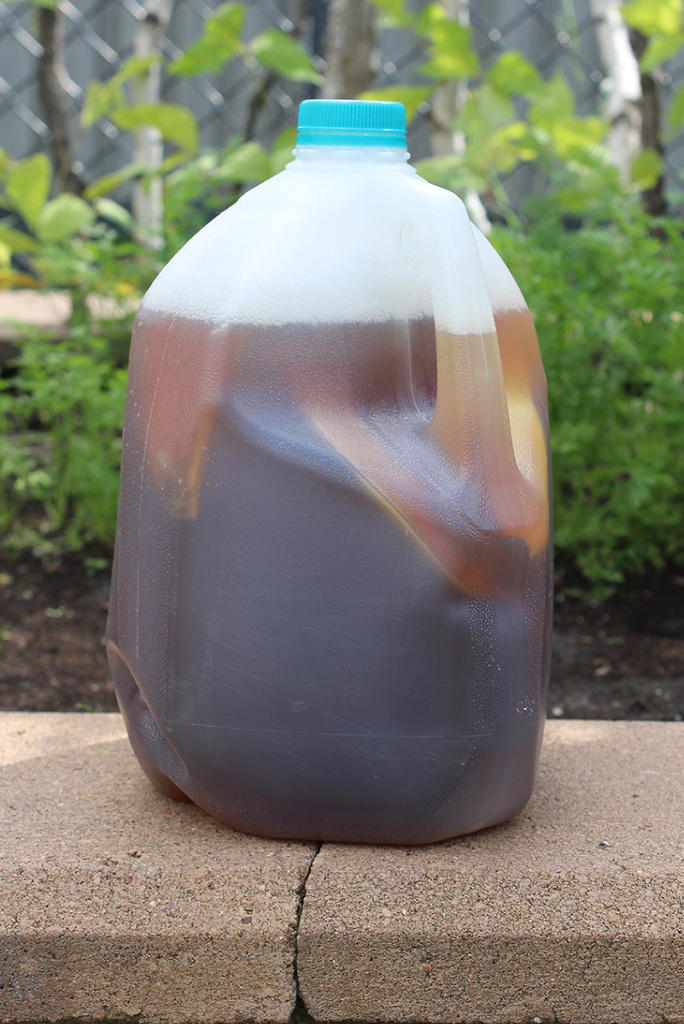
Learn More About DIY Garden Treatments + Organic Gardening
The world of organic gardening is very wide indeed. And what I know is only know a fraction of the knowledge. Thankfully there are plenty of people we can turn to for advice on DIY fertilizers, natural pest control, companion planting and more!
Recommended Reading
Do you have a garden? What do you use to fertilize it? Have you ever tried any of the homemade organic garden fertilizer options? Fish heads perhaps? Let me know in the comments fellow green thumbs!
CLICK TO PIN ME!
Last Updated on July 7, 2018 (Originally Posted on July 18, 2016)
Former architectural technologist. Current treehugger.
I’m here to help you green your home – and your life.
Subscribe to the Of Houses and Trees monthly newsletter and I’ll send you my FREE list of “The 8 Best Places to Buy Eco-Conscious Decor Online.”
What on earth is sustainable design? Learn all about this eco-focused design method and read the latest posts about green architecture, interior design and decor.
Sustainable living is more than just a thing treehuggers talk about. It’s about making conscious choices everyday. Read the latest posts on living with the planet’s wellbeing always in mind.
Visit the Of Houses and Trees sustainable product directory and support brands trying to make a difference in the world.
Find out more about our 40 acres of land in Parkland County, Alberta and the sustainable home we built amongst the trees.
Need help creating the home of your dreams? Care about the planet? You’ve come to the right place! check out my affordable, sustainable e-design services.
Having a had time choosing paint colours? I’ve got you – and your walls – covered with an interior paint palette sure to compliment your home.
Have questions about creating an eco-conscious home? Go ahead – ask me! Sign up for one of my free online interior design consultations and ask me anything you want.

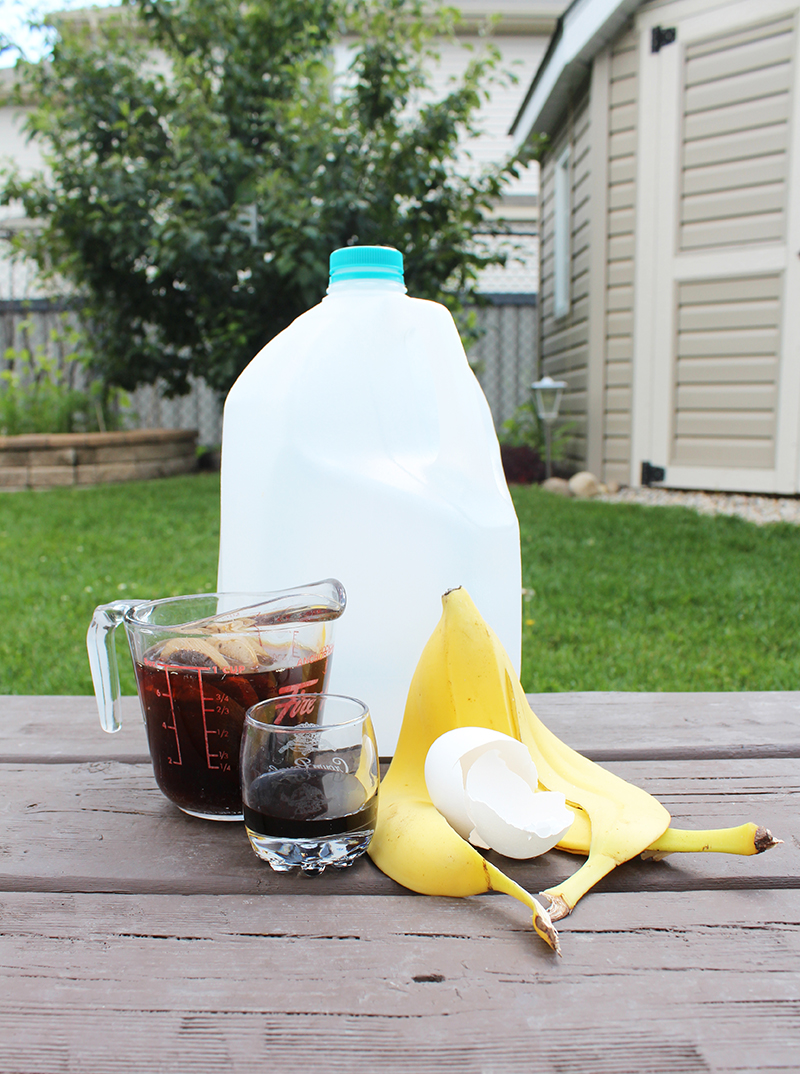



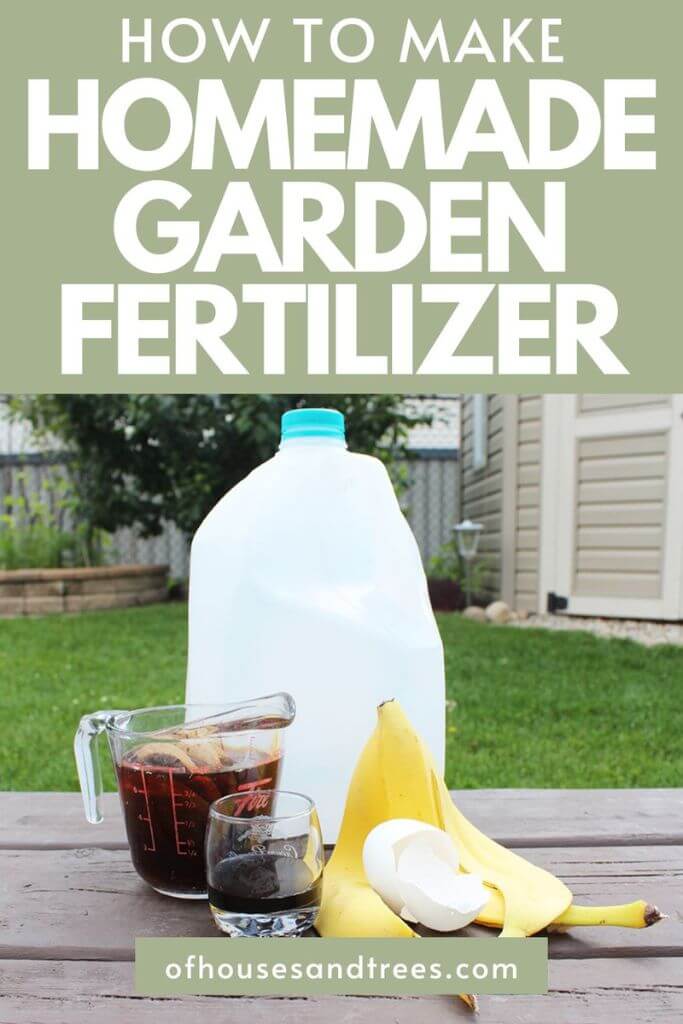



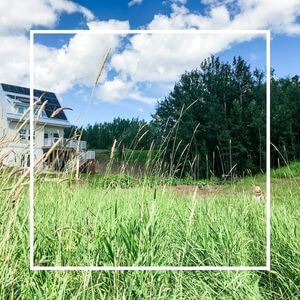
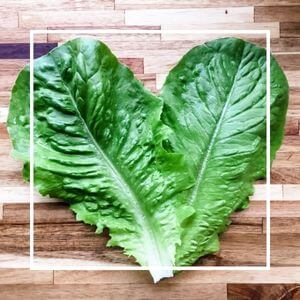
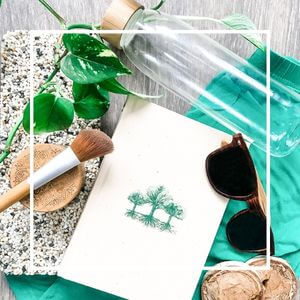



We throw all used coffee grounds into our garden! Also crushed up egg shells – I have no idea if either of these things actually work but we did get a lot of peas, carrots and lettuce this year…
Pingback:DIY Natural Garden Fertilizers for Miraculous Results - The Creek Line House
I appreciate the information. I am going to try it.
Thank you
I hope it works for you! Thanks for commenting 🙂
This is a fascinating article! A debt of
gratitude is in order for sharing incredible tips.
Thank you!
Have you continued to use this recipe and if so how’s it doing?
Thank-you, Terri
Hi Terri! I haven’t used this recipe for a couple years as we moved and I’m still getting into the groove of gardening in a much bigger space. Maybe I’ll try it out this year though 🙂 I’ll keep you posted!
Pingback:18 Best Free Homemade Liquid Fertilizer Recipes Balcony Garden Web – PlantandLoving
Thanks for the info.
You’re welcome! Hope you found it helpful 🙂
Thank you for sharing the informative article.
I’m so glad you liked it!
Thank you for sharing the informative article.